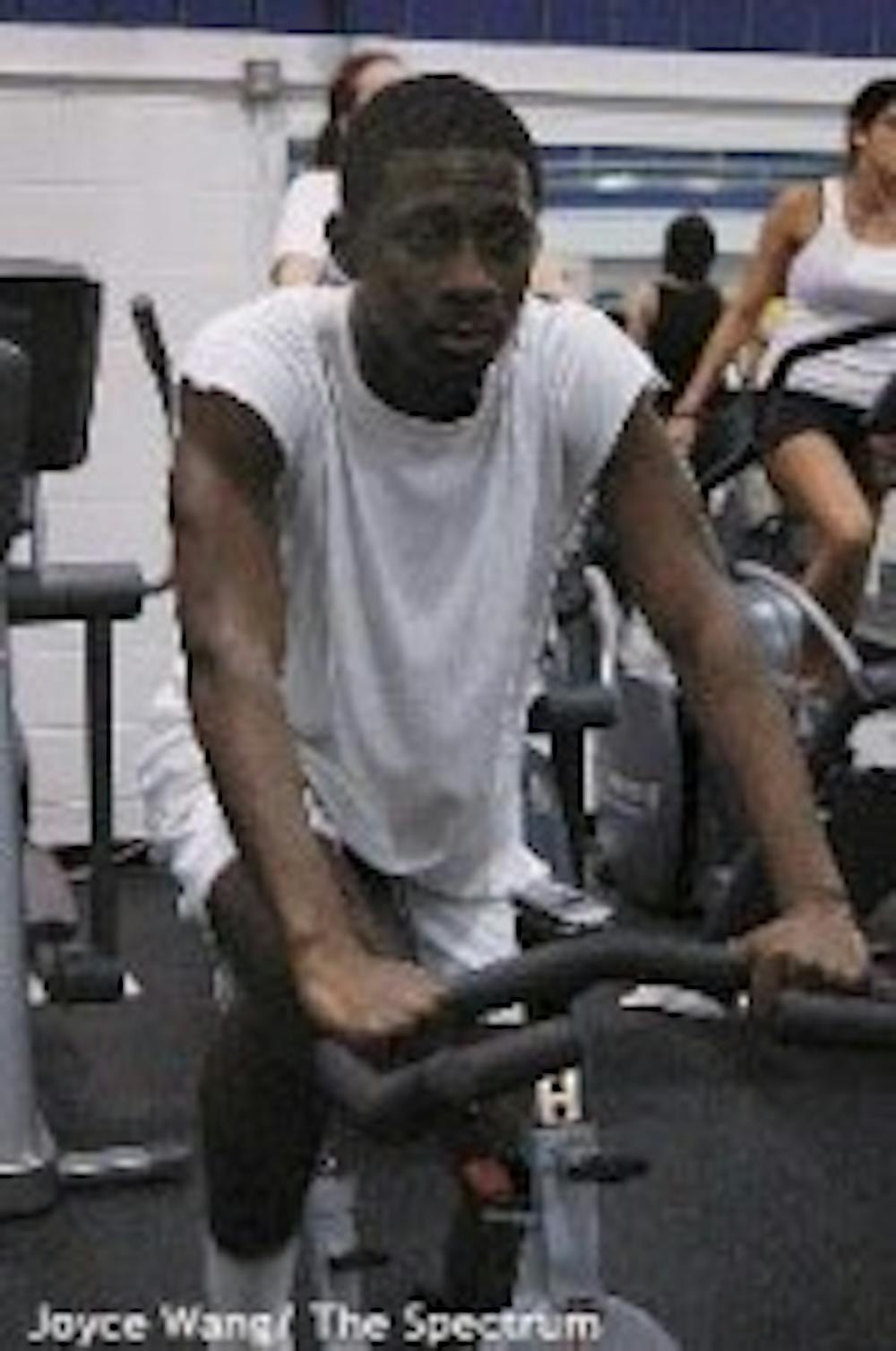Jill Esposito, the aerobics and program director with the Buffalo Athletic Club on Niagara Falls Boulevard, knows first hand how difficult it is to stay in shape while going to school full time.
As an undergraduate studying exercise science at UB, she can remember rollerblading with friends along the bike path during the spring and summer, but the winter months were always the most difficult between classes, work and assignments. She knows first hand what it is like to struggle with weight - what works and what doesn't.
"If I see that my pants are getting tight I know I have to get back into the gym," Esposito said.
Now that she has graduated and is working full time at the BAC, finding the motivation to be eating healthy and exercising isn't challenging, it's a part of her job. As a role model for the patrons that frequent the gym, the fear of not becoming heavy again keeps her behind looking svelte.
Not all students have such built-in motivation however. For these students, Esposito says, there is hope.
Esposito advocates the BAC's 30/30 program. Students can start developing exercise habits slowly, incorporating 30 minutes of exercise three times a week for the first 30 days. It can work for the student who is involved in everything and feels overwhelmed fitting exercise into their busy schedule.
"Thirty minutes is much easier to fit into a routine than an hour and a half," Esposito said. "Get your routine together, get it into your schedule, and then switch it up."
For the next 30 days, add 10 to 15 minutes to each workout. Start with simple cardio and resistance training Esposito said. Spend 25 minutes doing cardio and another 20 in the weight room, and the time will fly by without taking too much of your time. No matter what the experts say, some movement is better than none.
From there, students can find the exercise that interests them and keeps them coming back for more. If the idea of 30 straight minutes on the treadmill is nauseating, perhaps an interactive aerobics or spinning class will be more encouraging.
Joining a class may be intimidating for some, but classes at the BAC and on campus are often geared towards all skill levels. Instructors often have moderations for beginners or core steps newcomers can revert back to if the choreography becomes too difficult.
As always, finding a workout buddy is worthwhile to sticking to exercise habits and may make the gym a less overwhelming place. Find someone you feel comfortable with, Esposito says, because two is always better than one.
Having trouble finding a workout buddy? Esposito recommends being brave and striking up a conversation with people at the gym.
"Talk to people. You'll find you may have a lot in common with someone," she said.
Cross training isn't just for extreme athletes and is a way to put variety into one's exercise regimen, Esposito said. It may be easier to simply jump on the elliptical and watch TV but won't engage a range of muscles. Jump rope in the dorm room or run sprint races with a friend like you did when you were 10 years old.
"You need to change up what you're doing," Esposito said. "If you're not going to cross train you're probably not going to see results."
Keeping dumb bells and free weights in one's bedroom allows for an instant workout, especially while watching TV or talking on the phone. Esposito recommends doing an Internet search for moves; acsm.org and afaa.com are good places to start.
Similarly, isotonic exercises, yoga or Pilates moves, as well as workout DVD's are great when time is crunched. Students need not even dress for the gym. Fitness magazines often provide easy exercise moves that provide health benefits sans the equipment.
"You can be creative. You can change it up every single day," Esposito said.
Stretching isn't always at the top of a student's mind, but holding a bounce free stretch for 30 seconds per muscle group can increase flexibility and prevent injuries. Optimally, stretching for two to three minutes after warming up and after the workout is best.
"It's going to help increase the flow of the muscles and help to alleviate any pain or soreness from the workout," Esposito said. "If it's a time crunch, the beginning isn't important, just get that end stretch in."
Ultimately, it is about being mindful and getting some extra movement in each day (and off the couch). Take the stairs instead of the elevator, Esposito said.
For those students who need an extra boost, joining a gym with access to fitness instructors, personal trainers and dieticians may be helpful. The BAC offers competitive rates for students averaging around $30 a month. The services on campus, which are free with student fees, are equally useful.
Asking questions is key in eliminating fear of the gym, Esposito said. Men are typically drawn to resistance training in the weight room, but if they're not adding any cardio to their workouts they will never burn the fat overlying their muscles. Women patrons typically have the opposite problem, Esposito said, they're afraid of the weight rooms filled predominantly with males.
Regular exercise not only will make one feel better, but it can also decrease their physical age. There is a man at the BAC in his 70s who exercises all the time, Esposito said, and he looks like he is in his 50s.
If you're mind is set on losing weight, exercising isn't enough, Esposito said. Making healthy changes in one's diet is a part of the total package. She recommends grazing throughout the day, which will keep the metabolism revved up.
Don't be discouraged if at first you don't see results, changes are taking place at the cellular level within the first six weeks, Esposito said.
"Don't compare yourself to the person next to you," she said. "It takes time."





